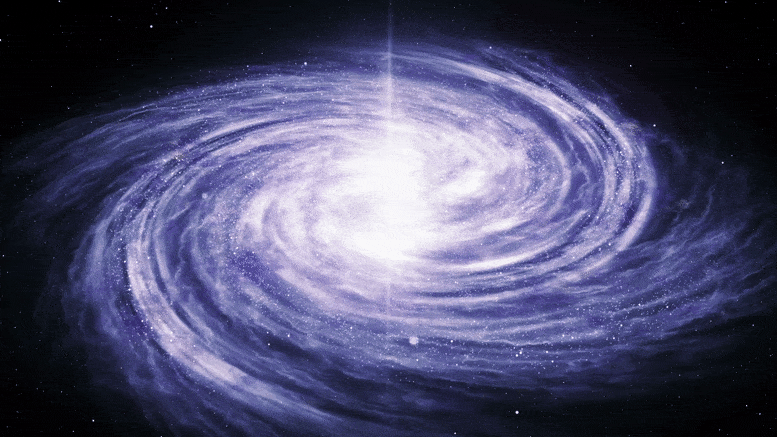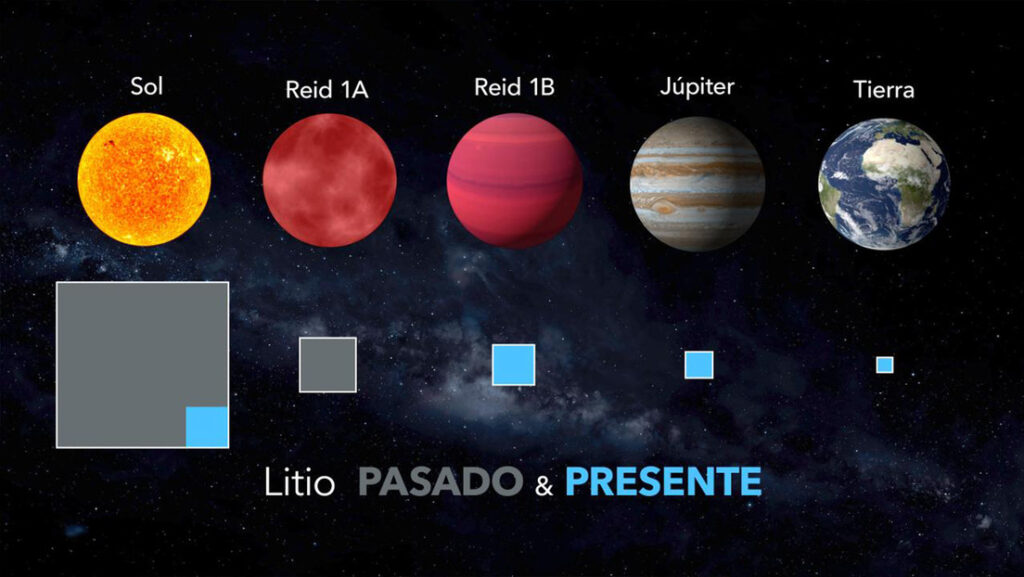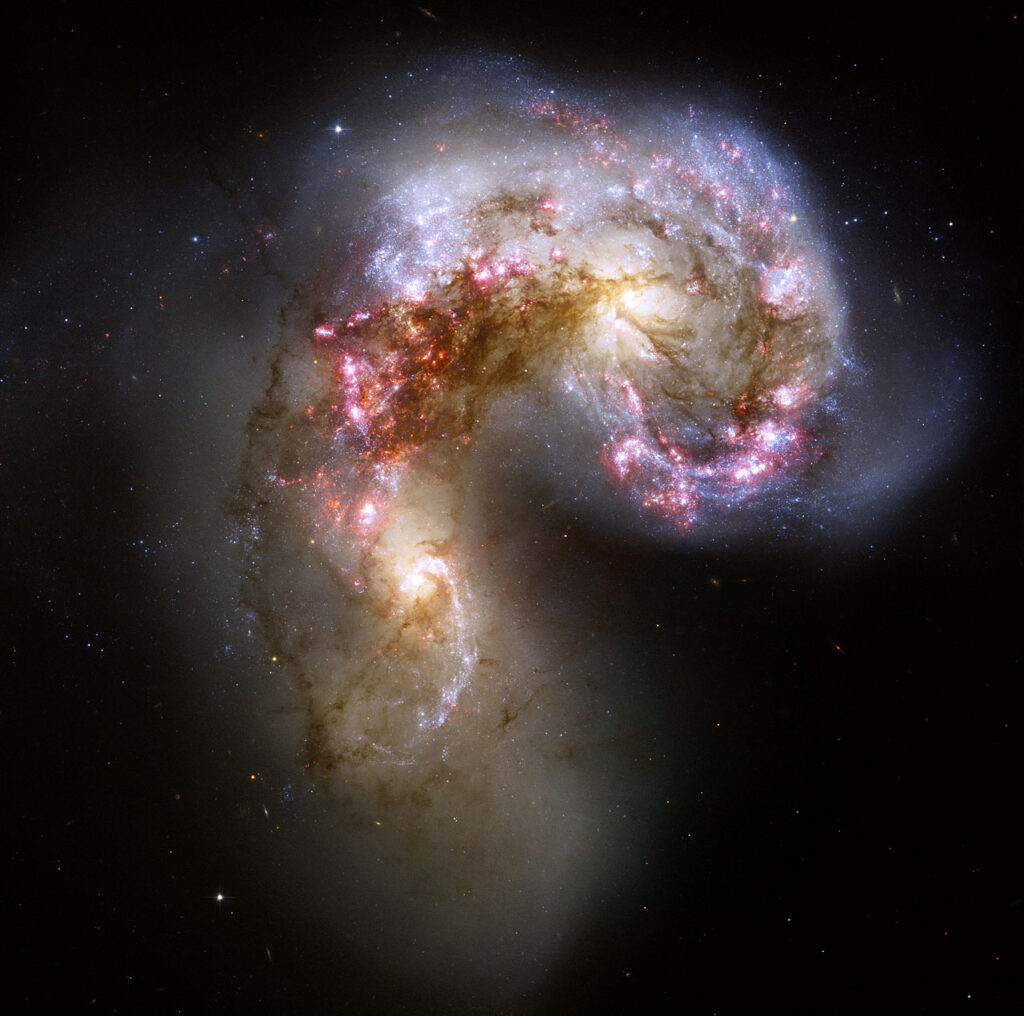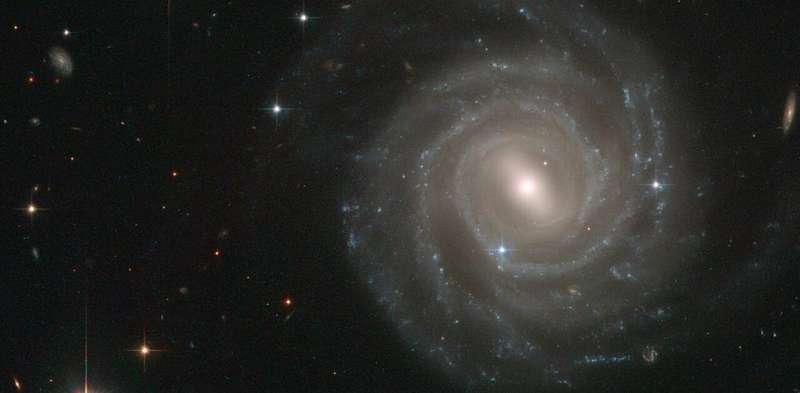by Indranil Banik, Postdoctoral Research Fellow in Astrophysics, University of St Andrews

Using Newton’s laws of physics, we can model the motions of the planets in the solar system with complete accuracy. However, in the early 1970s, scientists discovered that This didn’t work for him disc galaxies The stars at their outer edges, away from the gravitational force of all the matter in their center, were moving much faster than Newton’s theory predicted.
As a result, physicists suggested that an invisible substance called “dark matter“It was providing an additional gravitational pull, causing stars to accelerate—a theory that became widely accepted. However, in a last review My colleagues and I suggest that observations across a wide range of scales are much better explained in an alternative theory of gravity called Milgromian dynamics or Mond – Does not require any invisible material. It was first proposed by Israeli physicist Mordechai Milgrom in 1982.
Mond’s basic assumption is that when gravity becomes too weak, as it does near the edge of galaxies, it begins to behave differently from Newtonian physics. In this way, it is possible explain Why stars, planets, and gas in the outskirts of more than 150 galaxies are spinning faster than expected based only on their visible mass. However, Mond is not only explain Like rotation curves, in many cases, Expect they.
philosophers of science argue That this prediction power makes Mond superior to the standard cosmological model, which suggests there is more dark matter in the universe than visible matter. This is because, according to this model, galaxies contain an extremely uncertain amount of dark matter which depends on the details of how the galaxy formed – which we don’t always know. This makes it impossible to predict how fast galaxies rotate. But such predictions are routinely made with Mond, and that has been confirmed so far.
Imagine that we know the distribution of visible mass in a galaxy but do not yet know its rotation speed. In the standard cosmological model, it would only be possible to say with some confidence that the rotational speed would be between 100 km/s and 300 km/s in the suburbs. Mond gives a more specific prediction that the rotational speed should be in the range of 180-190 km / s.
If later observations reveal a rotational speed of 188 km/s, this agrees with both theories – but Mond is clearly the favourite. This is a recent version of Occam’s razor – that the simplest solution is better than the more complex solutions, in which case we must explain the notes with the fewest possible number of “free parameters”. Free parameters are constants – certain numbers that we must enter into equations to make them work. But the theory itself did not give them – there is no reason for any particular value to exist – so we have to measure it by observation. An example is the gravitational constant, G, in Newton’s gravitational theory or magnitude dark matter in galaxies within the Standard Cosmological Model.
We introduced a concept known as “theoretical elasticity” to capture the idea behind Occam’s code that a theory with the most free parameters is consistent with a wider range of data – making it more complex. In our review, we used this concept when testing the Standard and Mond cosmological model against various astronomical observations, such as the rotation of galaxies and motions within galaxy clusters.
Each time, we gave a theoretical elasticity score between -2 and +2. A score of -2 indicates that the model is making a clear and accurate prediction without looking at the data. Conversely, +2 stands for “anything goes” – theorists could have fit almost any reasonable observational result (since there are so many free parameters). We also assessed how well each model fits the observations, where +2 indicates excellent fit and -2 is reserved for observations that clearly show that the theory is false. We then subtract the degree of theoretical flexibility from that of agreement with the observations, since matching the data well is good – but being able to fit anything is bad.
A good theory would make clear predictions that were later confirmed, and a combined score of +4 on many different tests would be better (+2 – (- 2) = +4). A bad theory will get a score between 0 and -4 (-2 – (+ 2) = -4). Accurate predictions may fail in this case – and are unlikely to work with the wrong physics.
We found an average score for the Standard Cosmological Model -0.25 across 32 tests, while Mond achieved an average score of +1.69 across 29 tests. The scores for each theory on many different tests are shown in Figures 1 and 2 below for the Standard and Mond cosmological model, respectively.
dark matter problems
One of the Standard Cosmic Model’s most striking failures has to do with “bar galaxies” – bright, rod-shaped regions made of stars – in which spiral galaxies are often found in their central regions (see main image). The bars rotate over time. If galaxies were embedded in huge halos of dark matter, their rods would slow down. However, most, if not all, of the observed galactic bands are fast. this is fake Standard cosmological model with a high degree of confidence.
Another problem is that original models That the proposed galaxies have dark matter halos made a big mistake – they assumed that dark matter particles provide gravity to the matter around them, but are not affected by the gravitational pull of ordinary matter. This simplifies the calculations, but does not reflect the reality. When this was taken into account in Subsequent simulations It was clear that dark matter halos around galaxies do not reliably explain their properties.
There are many other failures of the Standard Cosmological Model that we looked at in our review, and Mond was often able to explained naturally Notes. However, the reason that the Standard Cosmological Model is so popular can be due to computational errors or limited knowledge of its failures, some of which have been discovered recently. It may also be due to people’s reluctance to modify the theory of gravity which has been so successful in many other areas of physics.
Mond’s large lead over the Standard Cosmological Model in our study led us to conclude that the available observations strongly favor Mond. Although we don’t claim that Mond is perfect, we still think it corrects the big picture – galaxies really lack dark matter.
Recent Posts
- Astronomers detect first direct image of black hole expelling a powerful jet
- WhatsApp rolling out ‘reply with message’ feature within call notifications
- Multi-Device Pairing May Be Arriving for Apple Watch this Year
- Artificial Intelligence Discovers Hidden Giant, a Planet 5 Times Larger Than Jupiter
- Google CEO Sundar Pichai Talks Bard & The Future Of Search
Recent Comments

Astronomers detect first direct image of black hole expelling a powerful jet

Artificial Intelligence Discovers Hidden Giant, a Planet 5 Times Larger Than Jupiter

Scientists explain melting of Antarctic ice sheet dating back 9,000 years

An Unexpected Discovery: Hubble, ESA's Gaia Spot Double Quasar That Existed Over 10 Billion Years Ago

Astronomers detect first direct image of black hole expelling a powerful jet

WhatsApp rolling out ‘reply with message’ feature within call notifications

Multi-Device Pairing May Be Arriving for Apple Watch this Year


